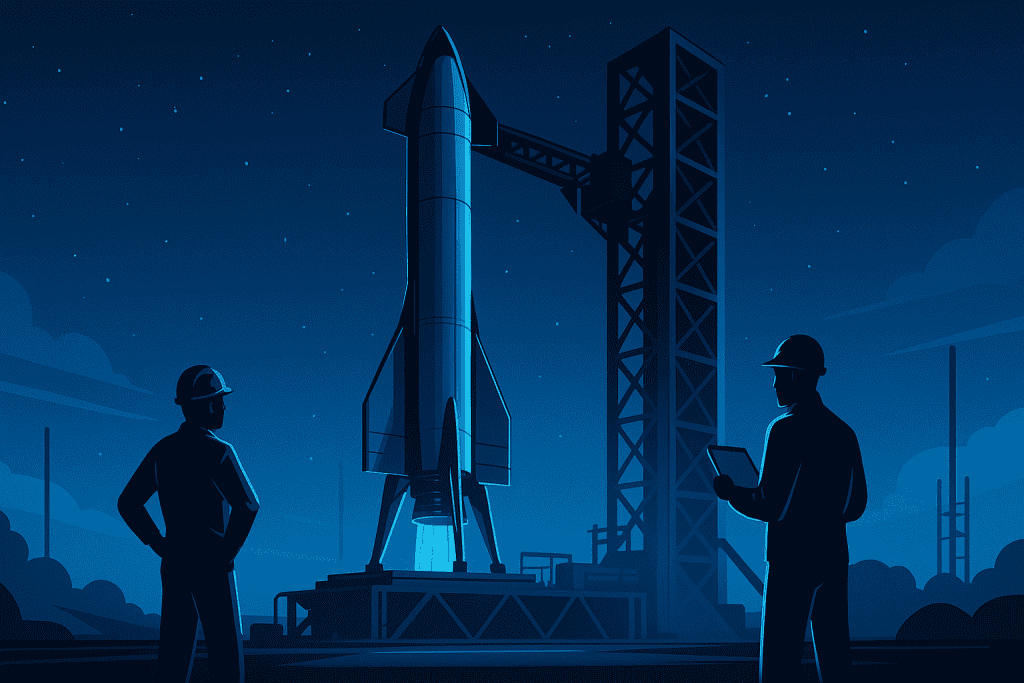
SpaceX is revolutionizing space travel with cutting-edge advancements in rocket reusability, drastically lowering costs and making space more accessible. The Falcon 9’s reusable design has transformed the industry, proving rockets don’t have to be single-use. Meanwhile, the powerful Raptor engines, built for the Starship rocket, are setting new standards in efficiency and thrust for deep-space missions. But SpaceX’s vision goes beyond technology—it’s about making life multi-planetary. The fully reusable Starship aims to transport large crews and cargo to Mars, the Moon, and beyond. These innovations aren’t just milestones; they’re paving the way for interplanetary exploration.
For space enthusiasts, engineers, and tech visionaries alike, it represents the pinnacle of modern aerospace engineering. Its relentless pursuit of innovation is pushing boundaries that once seemed impossible to cross. The company is actively working on a wide range of projects, from deploying massive satellite constellations with Starlink to perfecting in-orbit refueling techniques that will be crucial for deep-space missions. Each successful launch, landing, and technological breakthrough brings us closer to an era where humans can travel to Mars and establish a permanent presence beyond Earth. But what’s the latest buzz? Let’s dive into SpaceX’s newest developments and explore why they are critical to the future of space exploration.
What Happened?
SpaceX has been making headlines again with its relentless push toward innovation, further solidifying its position as a leader in the aerospace industry. Most recently, the company conducted another successful test flight of the Starship rocket, a fully reusable spacecraft designed to carry both crew and cargo on missions to the Moon, Mars, and beyond. As the most powerful spacecraft ever built, Starship represents a monumental leap forward in spaceflight technology, boasting an unprecedented level of thrust and efficiency. Moreover, this latest test marked a significant milestone, demonstrating key advancements in flight stability, heat shield durability, and landing precision. With each successful test, it moves one step closer to achieving its ambitious goal of making space travel more accessible, cost-effective, and sustainable.
At the same time, it is rapidly expanding its Starlink satellite network, bringing high-speed internet to remote and underserved areas across the globe. Furthermore, the Falcon 9—its highly reliable workhorse rocket—continues to launch satellites and astronauts with unparalleled efficiency, reinforcing SpaceX’s dominance in commercial spaceflight.
From perfecting reusable rockets to preparing for deep-space missions, SpaceX is proving that its advanced technology is not just futuristic—it’s actively shaping the future of space exploration.
When and Where?
The latest Starship rockdtest flight took place at SpaceX’s Starbase facility in Boca Chica, Texas, in early 2024. Meanwhile, Falcon 9 launches are happening almost weekly from Cape Canaveral, Florida, and Vandenberg Space Force Base in California.
With multiple missions on the calendar, SpaceX is making space travel feel like a regular occurrence rather than an extraordinary event.
Who is Involved?

Of course, the visionary behind all of this is none other than Elon Musk, the billionaire entrepreneur with a relentless drive to make life multi-planetary. But he’s not doing it alone.
Thousands of SpaceX engineers, scientists, and technicians work tirelessly to push the boundaries of space technology. NASA has also partnered with this on various missions, including sending astronauts to the International Space Station (ISS). Private clients, commercial satellite companies, and even government agencies rely on SpaceX to get their payloads into orbit.
Why It Matters
The impact of SpaceX’s advanced technology goes far beyond cool rocket launches and viral videos. Here’s why it’s a game-changer:
- Lower Cost of Space Travel: Traditional space missions were insanely expensive, but reusable rockets like the Falcon 9 have drastically reduced costs.
- Mars Colonization: Starship is designed to carry humans to Mars, potentially making interplanetary living a reality.
- Commercial Space Travel: SpaceX’s developments are paving the way for regular people—not just astronauts—to experience space.
- Satellite Connectivity: The Starlink project is bringing internet access to underserved regions, closing the digital divide. With thousands of satellites already in orbit and more being launched regularly, Starlink is rapidly expanding its coverage, providing high-speed internet to rural and remote areas worldwide.
- National Security & Defense: Governments and defense agencies are leveraging SpaceX technology for crucial missions. The company’s rapid-launch capabilities and secure satellite networks are playing an increasingly important role in military communications, reconnaissance, and global security.
Simply put, SpaceX is not just changing space travel—it’s changing the way we think about our future in the cosmos.
Quotes or Statements
Elon Musk, in his typical bold fashion, recently tweeted:
“Starship will take humanity to Mars. Exciting times ahead!”
Musk has repeatedly emphasized the urgency of space colonization, stating in an interview:
“Either we become a spacefaring civilization and a multi-planet species, or we risk being stuck on one planet until some eventual extinction event.”
In another tweet, he reinforced SpaceX’s long-term vision, saying:
“Making life multiplanetary is one of the most important things we can do for the future of civilization.”
Clearly, even the experts agree—SpaceX is shaping the future of spaceflight.
Conclusion

With every rocket launch, SpaceX is not just reaching new heights—it’s bringing us closer to a future where space travel is as routine as air travel, Mars is within reach, and satellites seamlessly connect even the most remote corners of the Earth. The company’s relentless drive for innovation is reshaping how we think about space exploration, making what once seemed like science fiction an achievable reality. From reusing rockets to reduce costs to deploying vast satellite networks with Starlink, SpaceX is proving that the possibilities for space technology are limitless.
But this is just the beginning of SpaceX. Looking ahead, we can expect even more daring missions, from crewed Moon landings with NASA’s Artemis program to Starship’s ambitious test flights aimed at perfecting interplanetary travel. With each record-breaking launch and technological breakthrough, SpaceX is laying the groundwork for humanity’s next giant leap—one that could see the first human footsteps on Mars in the not-so-distant future. The pace of progress is accelerating, and as SpaceX continues to push the boundaries of what’s possible, our excitement for the future of space exploration should only grow. The next era of spaceflight is unfolding before our eyes, and it’s a thrilling time to watch history being made.
Resources:
- Space.com: Discover about SpaceX launches 23 Starlink satellites on 11th Falcon 9
- Britannica: Learn about SpaceX | Spacecraft, Rockets, & Facts
- Historic Spacecraft: Check out the SpaceX Falcon Rockets
